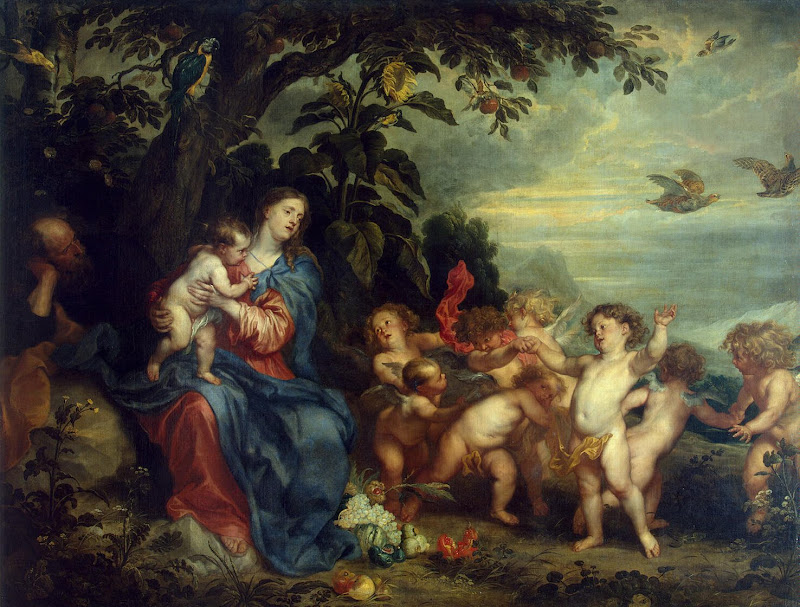Painting Detail
Rest on the Flight into Egypt - Madonna with PartridgesArtist: Anthony van Dyck
Medium: Painting, Oil on canvas, 215x285.5 cm
Date: c. 1629/1630
Genre: Christianity, Religious
Source: Collection of Sir Robert Walpole, Houghton Hall, 1779
The Biblical subject of the flight of Joseph and the Virgin Mary with the infant Christ into Egypt can be traced back to the apocryphal Gospel of Pseudo-Matthew who elaborated on this legend and provided a great many details. In Van Dyck's painting of the Holy Family's rest, there is the addition of angels who amuse Christ with their noisy and merry dances. This is a motif which entered painting at the end of the 15th century. While giving the scene an earthly, secular character, the artist enriched it with a number of allegorical elements. The sunflower, which rises in the centre over the figure of Our Lady, underscores the inner, spiritual sense of the entire scene - the divine essence of Mary as the innocent Virgin. The same meaning can be found in the parrot sitting on a branch to the left of the Madonna. Following the Iconology of Cesare Rippa, the partridges flying away may be said to symbolize profligacy and indicate that the purity of Mary drives off everything sinful. Among the fruits which the artist has depicted at the feet of Our Lady, particular attention is given to the pomegranate, an allegorical symbol for chastity, virginity and resurrection. The apple-tree beneath which the Holy Family is seated symbolizes Mary's overcoming the original sin, while the white roses that can be seen behind the tree, together with the lily are an attribute of the Madonna and embody love, beauty and joy.
Very likely the picture was painted by the artist for the Antwerp "society of bachelors" - a brotherhood devoted to Our Lady. It is therefore no coincidence that there is such an abundance of symbols relating to the Madonna, and that an episode in the life of Christ has been turned into a theme relating mainly to the cult of the Virgin Mary.
